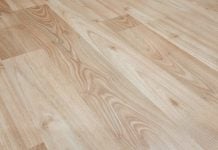Whether it’s an SPF lotion, moisturizer or eye cream, the first thing you need to do when purchasing skincare products is to check the ingredient list. Forget about the product description and manufacturer’s claims; you want to know what the product contains to determine if it’s of any help to you.
Unfortunately, understanding the ingredient list isn’t something everyone can do. If you lack basic chemistry knowledge, you cannot tell which ingredients are good for your skin, especially because the ingredient list contains their technical names.
All skincare products contain two types of ingredients, active and inactive, and you should learn to differentiate them. You might wonder now why manufacturers spend their money on integrating inactive ingredients that don’t do anything in skincare products. Inactive ingredients are essential for a product to be effective because they are the delivery method for the active elements, and usually, they are oil or water-based.

What are active ingredients?
The active elements should deliver the results and benefits advertised on the label. Even if inactive ingredients could also offer some skincare benefits, active ones are supposed to do the work. All skincare products utilize active ingredients, and they should be mentioned on the product’s packaging according to their prominence within the formula. You’ll find it helpful when looking for products containing specific elements.
The” first five” rule
Skincare experts recommend following the first-five rule when reading the ingredient list because it tells you the elements with the highest percentages within the formula. They determine its performance, and you want to ensure they’re exactly what you need.
The skincare product label will provide you with information about:
– What the product contains
– The ingredients with the highest percentage are listed first
– The ingredients with the lowest percentage are listed last
– The first ingredient in any skincare product is usually water or aloe (70-95%)
– The following 4 ingredients have concentrations of 3-5%
– The next ingredients can still impact the product’s performance
Popular skincare ingredients
Before purchasing skincare products, ensure you know what your skin type is and what ingredients serve you well. A dermatologist can help you identify the right products for your complexion.
We’ll walk you through some of the most popular skincare ingredients. If you need help understanding their effects, enroll in an online chemistry class to improve your knowledge.
Alpha-hydroxy acids (AHA)
Products rich in AHA have gained tremendous popularity over the last few years because they help with irregular pigmentation, fine lines, wrinkles, and age spots. They are also beneficial if you want to shrink your enlarged pores. However, it’s important to know that AHA can sometimes irritate your skin and make it sensitive to the sun. It’s crucial to apply sunscreen when using it. If you have never used AHA products before, start with a product with a 10% or 15% AHA concentration to allow your skin to adapt to it gradually.
Glycolic acid
Glycolic acid is also an AHA, which boosts collagen production and exfoliates your skin. You can add it to your skincare routine if you want to smooth fine wrinkles, clear your pores, and hydrate your skin. Dermatologists usually recommend using creams rich in glycolic acid when you have eczema. You can also use a cleanser containing glycolic acid to remove blackheads.
Lactic acid
Your body naturally produces this AHA in red blood cells and muscle cells. You can use skincare products containing it for peeling or moisturizing your skin.
Beta hydroxy acids (salicylic acid)
Salicylic acid effectively removes dead skin and improves the color and texture of sun-damaged skin. It’s quite helpful if you deal with acne and is less irritating than alpha-hydroxy acids. You can find salicylic acid rich products in over-the-counter skincare products.
Hydroquinone
Lightening and bleaching skincare products usually contain hydroquinone. It’s very helpful in improving hyperpigmentation, age spots, and dark spots resulting from pregnancy hormones. Some SPF products also contain it because sun exposure causes hyperpigmentation.
Retinol
Retinol has multiple uses; it improves skin hydration, skin color and tone, skin texture, wrinkles and fine lines, acne, and acne scarring. It’s derived from vitamin A, which you can find in many skincare products. Tretinoin, an active ingredient in prescription skincare products, is retinol’s stronger version. Vitamin A has a molecular structure, so it’s tiny enough to enter the deepest skin layers and boost elasticity and collagen, which are responsible for skin flexibility.
L-ascorbic acid (Vitamin C)
L-ascorbic acid is the only beneficial form of Vitamin C you should search for in skincare products. On the market, you can find products containing Vitamin C derivatives like ascorbyl palmitate or magnesium ascorbyl phosphate. Still, L-ascorbic acid is the only beneficial one for your complexion.
As you age, collagen synthesis in your skin decreases, and you start noticing wrinkles. Vitamin C is the only antioxidant that stimulates collagen production to improve the aspects of scars, fine lines, and wrinkles.
Hyaluronic acid
Hyaluronic acid is often paired with Vitamin C to improve its penetration power. Hyaluronic acid is often promoted as an ingredient that reverses or stops aging. Some skincare brands even advertise it as a magical ingredient that can be compared to the fountain of youth. The human body naturally produces hyaluronic acid, which is found in higher quantities in young skin.
It has an essential role in cushioning and lubricating the tissues, but as you age, external and internal factors destroy it, and you must supplement to maintain it at a proper level.
Niacinamide (Vitamin B3)
Niacinamide is a form of Vitamin B3 that helps the skin stay healthy and firm and encourages keratin development. It can prevent the skin from flushing and encourages moisture retention. If you suffer from rosacea, use niacinamide face masks to reduce swelling and redness.
Making sure your skincare products contain the right ingredients
Now you have some basic knowledge about what ingredients you can find in skincare products, and you should have fewer issues in selecting the right ones for your condition.












